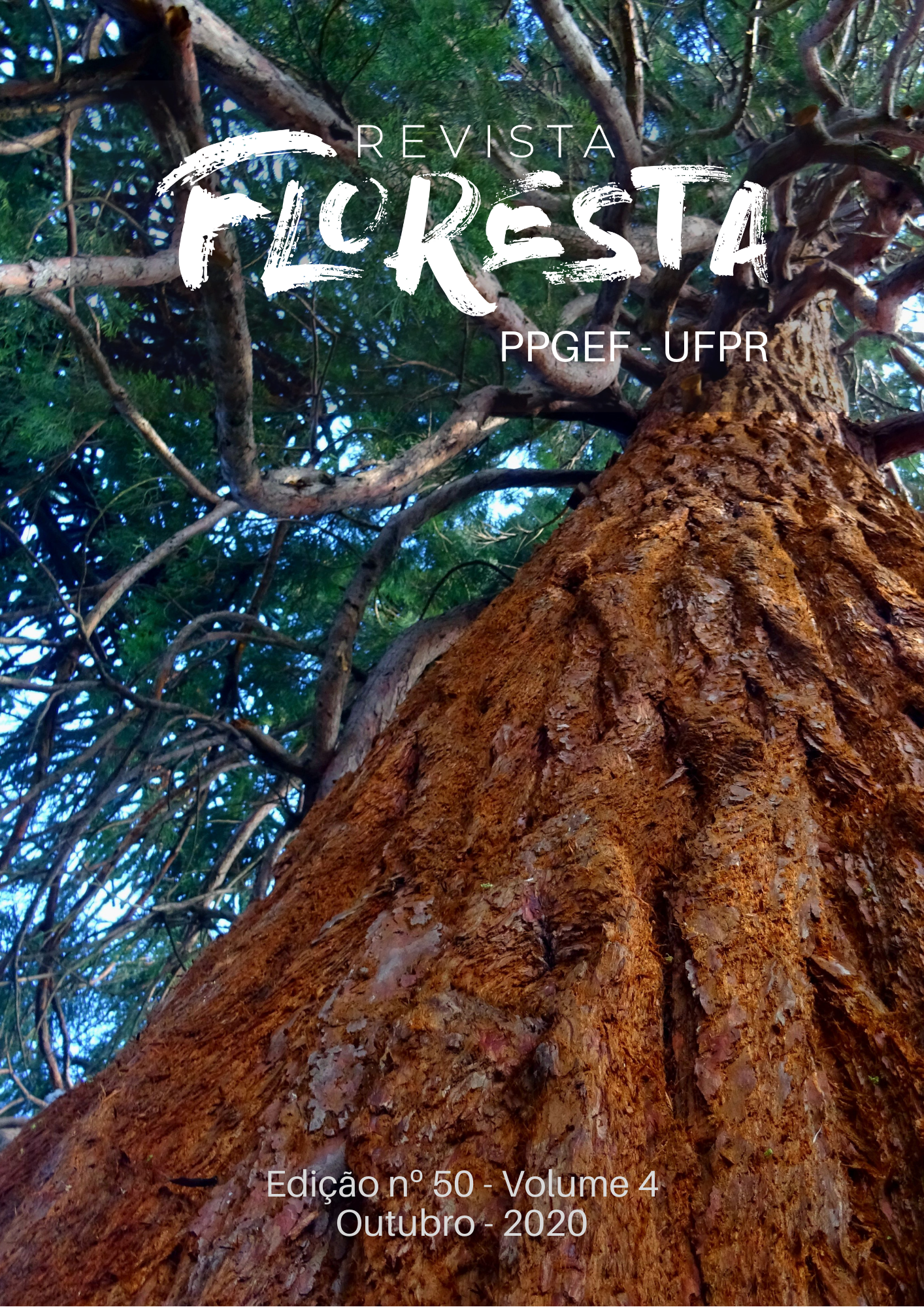PRODUCTION OF Colubrina glandulosa SEEDLINGS WITH DIFFERENT MYCORRHIZAL INOCULA
DOI:
https://doi.org/10.5380/rf.v50i4.60840Palavras-chave:
Biosolid, biomass, arbuscular mycorrhizal fungi, mycorrhizal symbiosisResumo
Colubrina glandulosa has potential for reforestation of disturbed areas. Seedlings inoculated with arbuscular mycorrhizal fungi (AMF) can be produced with biosolids from Sewage Treatment Plants. This study aimed to evaluate the response of Colubrina glandulosa seedlings to isolated or mixed inoculation of different AMF species on a biosolid-based substrate under greenhouse conditions. The experimental design was completely randomized, with 32 replicates (seedlings)/treatment and five treatments: (1) control or absence of inoculation (CT); (2) inoculation with Dentiscutata heterogama (DH); (3) inoculation with Gigaspora margarita (GM); (4) inoculation with Rhizophagus clarus (RC); (5) inoculation with the mixture of the three AMF species (MT). We evaluated height and collar diameter of the seedlings at 30, 60, 90, 120, and 140 days after the experiment installation. We evaluated shoot dry biomass (SDM), root dry biomass (RDM), and total dry biomass; SDM / RDM ratio; Dickson Quality Index; relative increments in height, collar diameter, and shoot biomass; nutrient content (N, P, K) in the shoots and roots; efficiency of absorption and utilization of nutrients; rate of root mycorrhizal colonization, at 140 days. In general, the highest values of growth and nutrition variables occurred in the MT treatment, which was recommended, in comparison with CT, DH, GM, and RC. Colonization rates were low (≤ 20 %), regardless of the mycorrhizal inoculum, due to the high levels of phosphorus in the biosolid.
Downloads
Publicado
Como Citar
Edição
Seção
Licença
Direitos Autorais para artigos publicados nesta revista são do autor, com direitos de primeira publicação para a revista. Em virtude da aparecerem nesta revista de acesso público, os artigos são de uso gratuito, com atribuições próprias, em aplicações educacionais e não-comerciais.A revista, seguindo a recomendações do movimento Acesso Aberto, proporciona acesso publico a todo o seu conteudo, seguindo o principio de que tornar gratuito o acesso a pesquisas gera um maior intrcambio global de conhecimento.
Conteúdos do periódico licenciados sob uma CC BY-NC-SA 4.0



